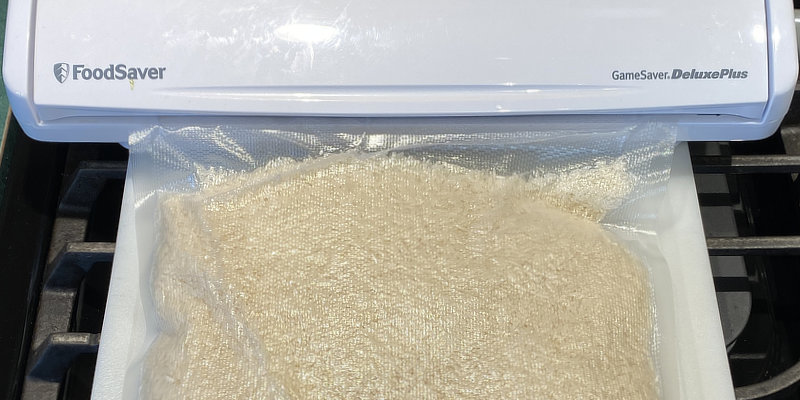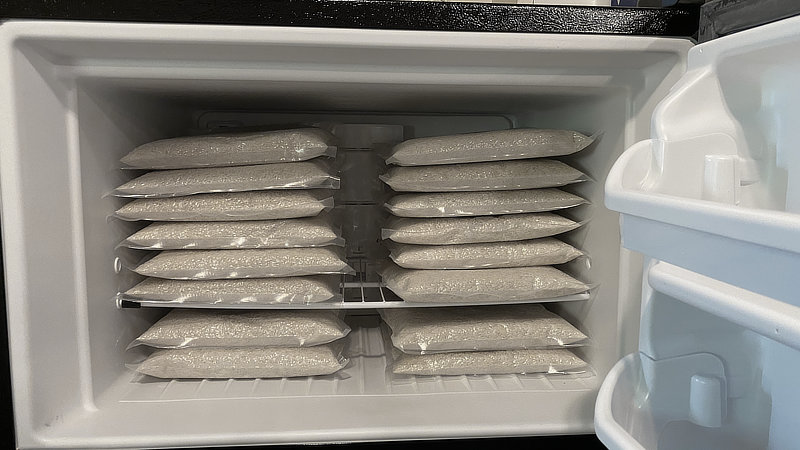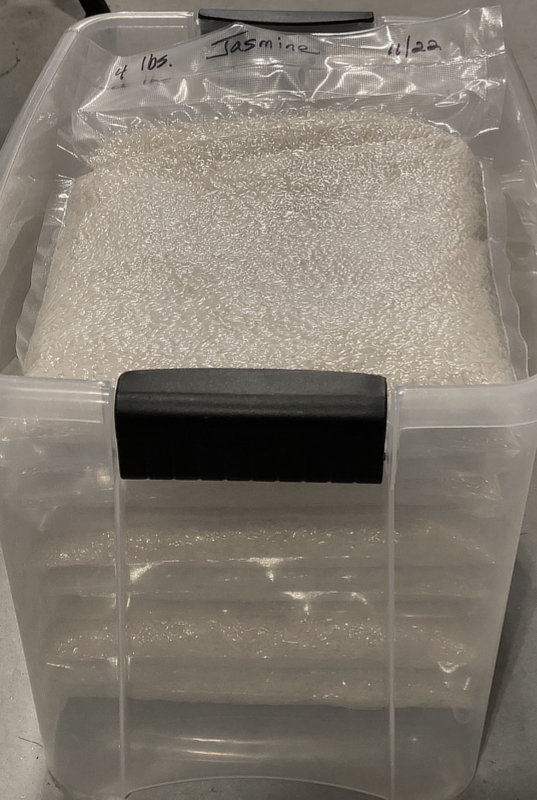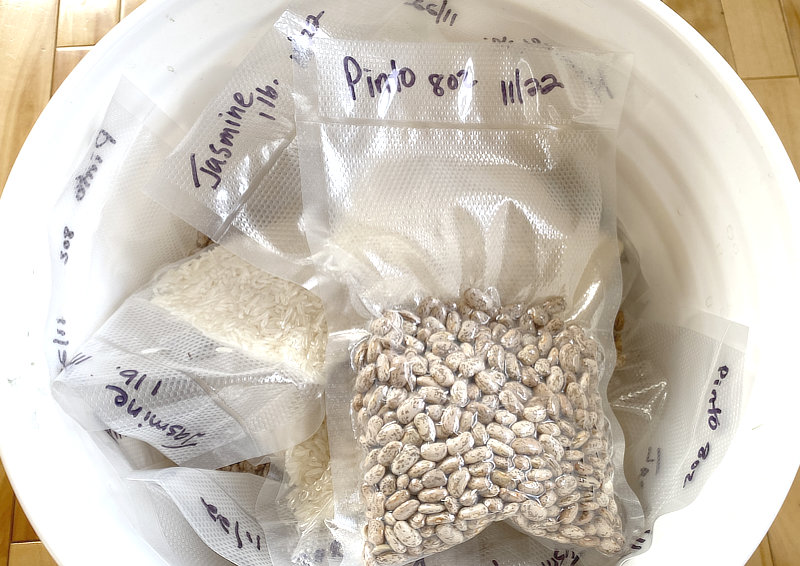Vacuum Seal Rice and Beans For Long Term Storage

I store rice and beans as one part of my overall wide-ranging diversified long term food storage for preparedness. I store them two different ways. The 5-gallon bucket method, and, vacuum seal bags. I’ve entirely switched over to using vacuum seal bags for rice and beans. I’ll explain why…
First, as you likely know, rice and beans are NOT expensive. They ARE a quick and easy way to accumulate survival food calories. Rice and Beans ARE a unique survival food combination (see link below).
A question you may ask is as follows… What is the best way to store rice and beans? Here’s my current opinion:
Rice & Beans Storage in Vacuum Seal Bags
We purchase white rice in bulk. 20 pound bags. Walmart, or wherever… Then we use gallon size vacuum seal bags, each holding 4 pounds of rice. Flatten out the rice in the bag for easier stacking. Then vacuum seal it using your favorite vacuum sealer machine.
We purchase beans in various amounts. Pinto, Great Northern, whatever floats your boat… Quart size vacuum seal bags will nicely hold 2 pounds of beans. Similarly as with the rice, flatten the bag prior to vacuum sealing for easier stacking /storage.
I chose the ratio of 2:1 for dry rice and beans which results in a typical likeable proportion after cooking. The sky is the limit with regards to spicing it up (be sure to have enough spices and such – to go along with your quantity of rice and beans storage). Additionally, we may typically add some meat. We’ve home canned plenty of chicken and beef (as well as chest freezer storage of same). Again, there are a ton of rice-and-bean recipes. You likely have your own favorites.
Vacuum Seal Bags Are Convenient
Rather than storing a full 5-gallon food bucket filled with 30 pounds of rice in a Mylar bag with oxygen-absorbers, I like the vacuum seal method. Although I do have bucket storage with O2 absorbers, I simply like the more manageable size vacuum sealed quantities, tailored to one’s liking. I also feel that there’s a better ‘vacuum’ than with Mylar bags and O2 absorbers – thus perhaps a better ‘long term’ storage result.
Freeze The Rice Several Days To Kill Bugs /Eggs
You can’t see them, but they might be there. You never know. I freeze the vacuum sealed rice bags for several days. This will kill any tiny bugs or bug eggs that may be present, but not visible. Here’s a picture using my garage/shop fridge freezer getting the job done…

Storage Bins or Buckets For Vacuum Sealed Rice & Beans
Where to store the vacuum sealed bags of rice and beans? Well, I personally like using plastic storage bins. I use Sterilite 30-qt size for lots of things. It holds six 4-pound bags of rice (gallon size vacuum seal bags), or twelve 2-pound bags of beans (quart size bags). That’s 24 pounds each. This equates to ~38,000 calories each. Uncooked white rice have approximately 1,600 calories per pound. Dry beans are very similar.
Sterilite 30QT bins
(amzn)


Next is what you might call a rice-and-beans grab-and-go 5 gallon bucket. Using the same ratio of 2:1, I vacuum sealed 1 pound bags of rice, and 1/2 pound bags of beans using pint size bags.
The 5 gallon bucket holds 10 bags of each, with room to spare for a Gamma Seal Lid. So that’s 10 pounds of rice and 5 pounds of beans in convenient smaller proportions. That’s ~24,000 calories.

Hopefully this has provided a few ideas for your own emergency food storage. Rice and beans are cheap food insurance. Simply use a vacuum sealer and bags to store them for long term.
Good Price on Vacuum Seal Bags
FYI, I have been purchasing the following vacuum seal bags for some time. They are the best price that I’ve found, and they have held up well. I have found that using vacuum seal rolls are a pain. But the pre-size vacuum seal bags are great. Easy and convenient. I have hundreds of each size, and use them for a wide variety of food products. For example, ALL of my chest freezer meats are stored this way. Tastes as fresh as the day you bought it…
(view on amzn)
[ Read: Rice and Beans – A Survival Combination ]
[ Read: Gamma Seal Lids Are Great ]
